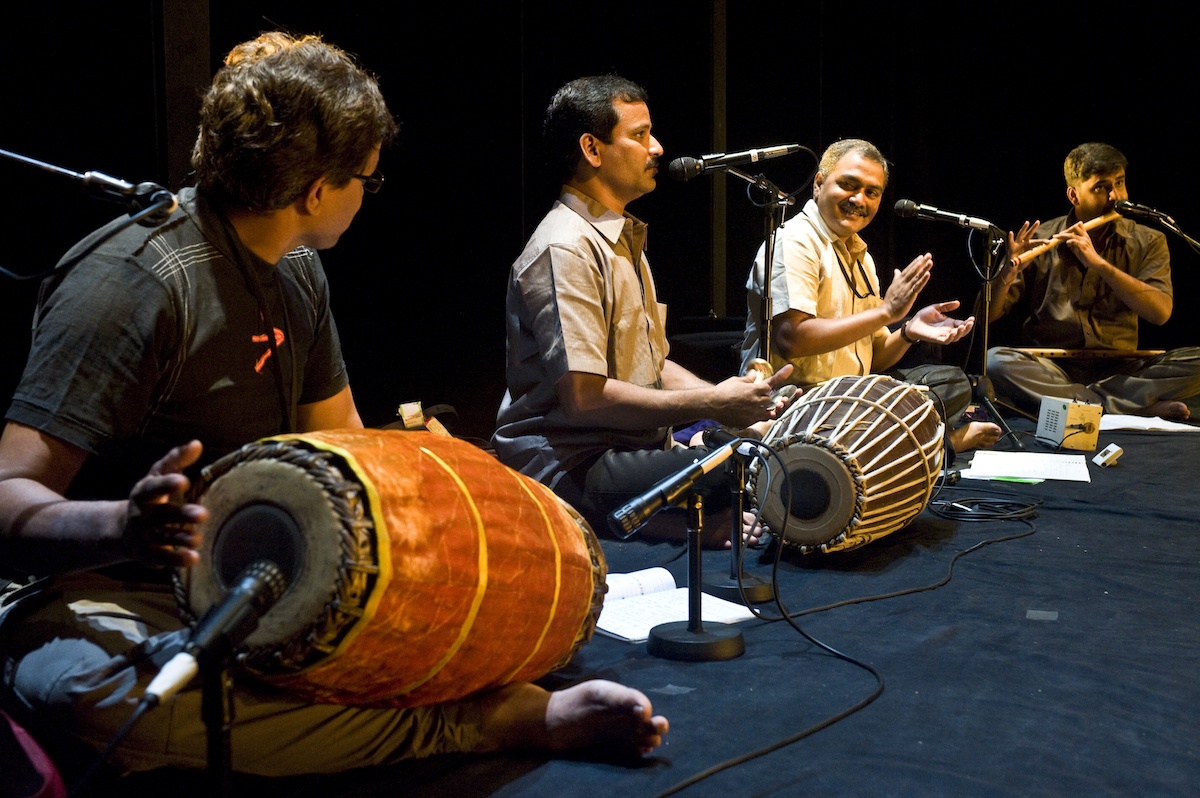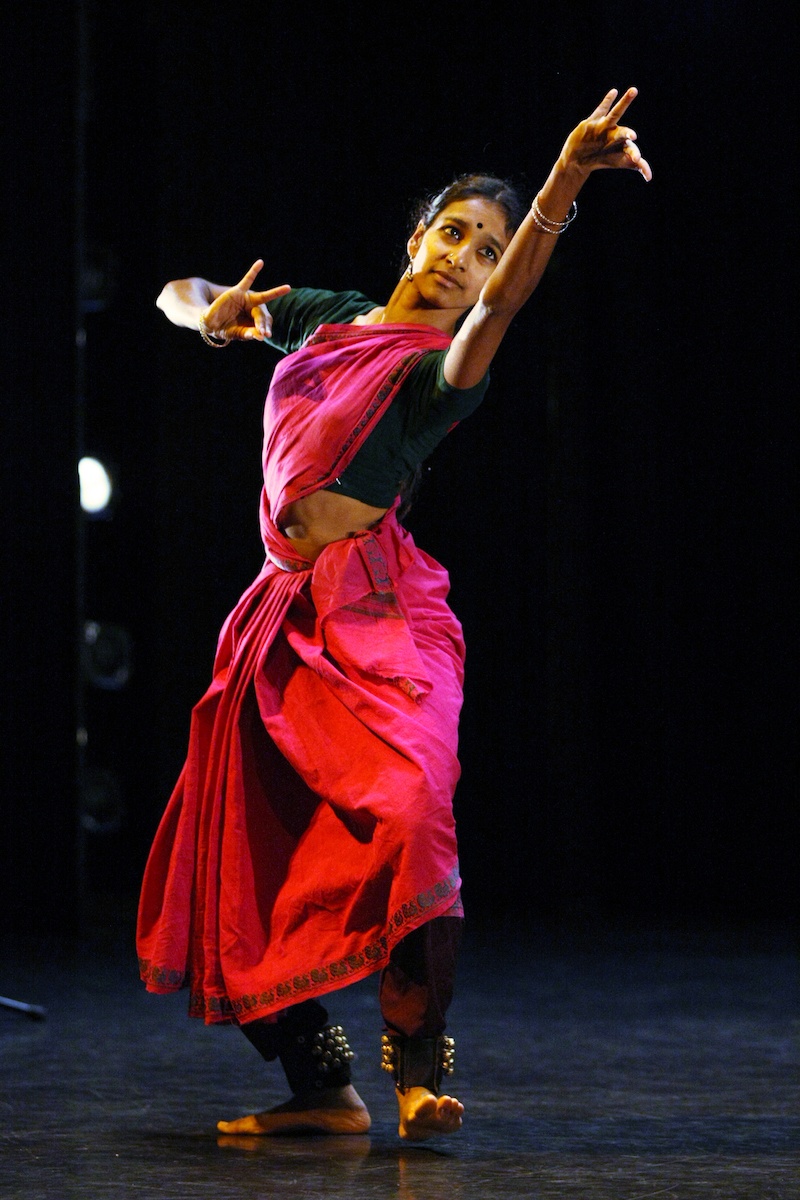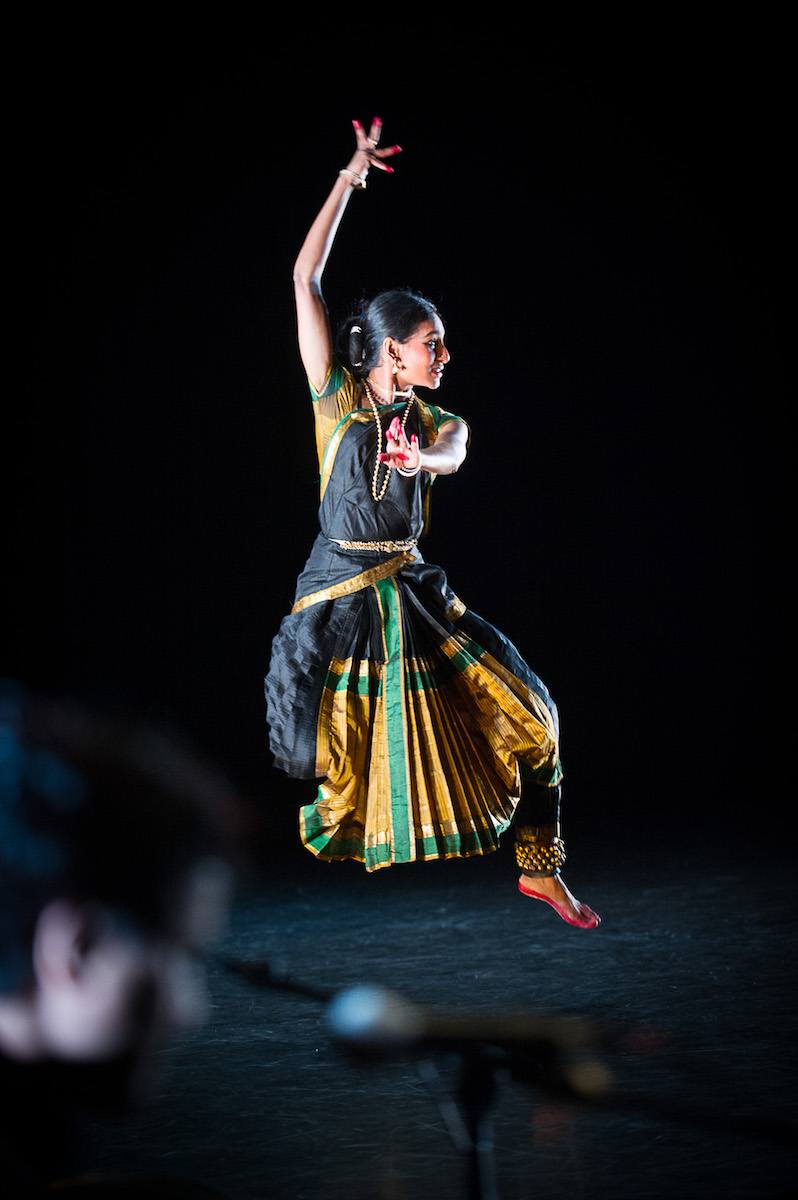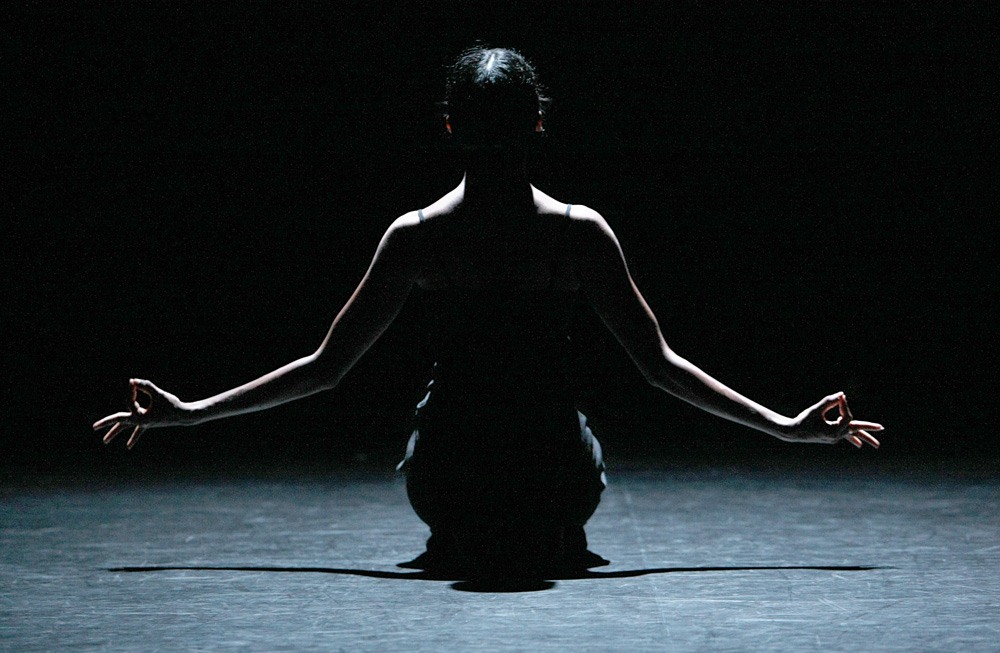Shivalingappa and Kuchipudi
Shantala Shivalingappa is a remarkable dancer and choreographer, best known for her performances of Kuchipudi, one of the major forms of classical Indian dance. In her evening-length solo performances, Shivalingappa moves with elegance, precision, and robustness, with feet stamping, arms bending, eyes directing, and hands gesturing. Kuchipudi draws on stories based on Hindu mythology, making it a rich narrative tradition, but also features sections within every performance that are pure dance. It’s dance, it’s drama, it’s music. And—especially when Shivalingappa dances—it’s art.
Born in Madras and raised in Paris, Shivalingappa began training in Kuchipudi early, encouraged by her mother, Savitry Nair, a master Kuchipudi teacher and dancer herself. Shivalingappa also has also studied and performed with masters of western concert dance, including Pina Bausch, Maurice Béjart, and Sidi Larbi Cherkaoui.
In his PillowNote, Pillow scholar Philip Szporer wrote, “It’s easy to think that cultural preservation was the motivation for her dance training but what may have begun as such has transformed into something else. Kuchipudi remains her basis, but she is among a growing number of ‘bilingual’ performers fluent in classical Indian and contemporary forms. Shivalingappa is able to reference the expressive qualities of each dance form.”
Dance and Music
In Kuchipudi, the relationship between dancer and musician (and between dance and music) is evident with every movement and every sound. Shivalingappa dances, accompanied by a live ensemble of musicians and singers who sit cross-legged on stage. The vocals are joined by flute, nattuvangram, and pakhwaj (cymbals and percussion) and mridangam (percussion). With rhythmic footwork and ankle bells, Shivaligappa contributes to the sound score with every step she takes.
In her 2015 review of Shivalingappa’s Akasha (2013), dance writer Thea Singer effuses,
“A concert of ‘solo dances’ doesn’t do it justice. ‘Musicking’ better hits the mark—a word coined by musicologist Christopher Small that makes music; active and embraces not just instrumentation and song but also symbolism and gesture—a give-and-take, an intermingling that strikes at the very core of who we are.”Thea Singer, “Shantala Shivalingappa Lights the Way.” Boston Globe March 2, 2015
An excerpt of the Pillow-commissioned Akasha from Shivalingappa’s 2013 season can be seen here.
She discussed both the choreographic process and the dancing of Akasha following the performance.
Szporer considers the relationship between Shivalingappa’s eastern and western training in his PillowNote, “Her work is neither a fusion nor a conscious blending of cultures and styles. Her goal seems to be to bring more and more people into the fold of Indian dance. She certainly does not claim to represent all aspects of what it means to be an Indian dancer or Kuchipudi practioner. Yet, overcoming stereotyping, this is an artist who is creating a dance vocabulary uniquely her own. In the process, she implicitly challenges pre-conceived notions of what Indian dance is with her own artistry, grace, and beauty.”
Interview with Shivalingappa
In a PillowTalk titled Preserving Dance Traditions, moderated by Pillow scholar Suzanne Carbonneau, Shivalingappa, Savitry Nair, and Joseph Houseal discussed not simply preserving but also extending traditional dance forms.
Shivalingappa is a stunning dancer, with every performance bringing new fans to the dance and music of Kuchipudi. As Thea Singer wrote, “When the music stops, so does she. The dance and the music: Inseparable.”Boston Globe


Shivalingappa is one of the featured artists in the documentary Never Stand Still, directed by Ron Honsa.
David Michalek’s Slow Dancing project in 2008 featured Shivalingappa in Smarana, a work choreographed by Savitry Nair.
PUBLISHED March 2017


